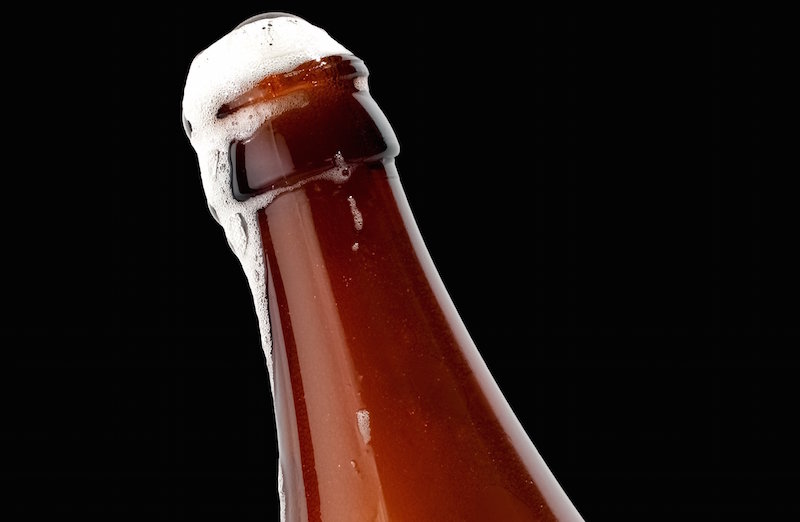Cheers! Yeast's Evolutionary Journey Gave Beer Its Flavor

Whether discussing the crisp taste of lagers or the more robust flavor of ales, beer buffs typically have plenty to say about where their preferences lie. But at the heart of the matter is a key ingredient, yeast, which has a fascinating evolutionary story that begins in a cave more than 500 years ago.
What sets lagers and ales apart has to do with the beer's fermentation process. Now, new research explains how different strains of yeast came to be (particularly those used to make lagers), which had been something of a mystery.
The fundamental difference between lagers and ales is in the yeast. Ales contain one relatively pure strain, called Saccharomyces cerevisiae, while lagers contain mixtures, or hybrids, of Saccharomyces cerevisiae and another strain called Saccharomyces eubayanus. [Raise Your Glass: 10 Intoxicating Beer Facts]
Fifteenth-century Bavarian brewers discovered that storing beer in caves during the winter produced a lighter, smoother beer that was eventually named "lager," from the German word "lagern," meaning, "to store." Brewers liked the finished product and continued to replicate their results by using the same barrels and equipment over and over, inadvertently spreading the yeast from batch to batch.
"Brewers typically, even before understanding that yeast was the cause of fermentation, often adopted practices that were sort of conducive to passaging [yeast] strains from one batch of wort to another," said study co-author Chris Hittinger, a genetics professor in the Department of Botany at the University of Wisconsin-Madison. Wort contains the sugars that the yeast ferment to produce alcohol and passaging keesp the yeast cells alive under cultured conditions.
It wasn't until the late 19th century that yeast was identified as the culprit of fermentation. Then, in the 21st century, researchers looked at the two main strains of lager yeast and compared their genetic makeup to determine their origin and evolution.
"Brewers had classically defined two major types of lager yeast: the Saaz lineage, which is not used very much anymore today, and the Frohberg lineage, which is the main lineage of lager yeast that constitutes most of the strains that are used industrially today," Hittinger said.
Sign up for the Live Science daily newsletter now
Get the world’s most fascinating discoveries delivered straight to your inbox.
The researchers determined that the Saaz and Frohberg lineages, named for their locations of origin, resulted from isolated events that brought two different strains of yeast together.
Yeast proliferation
The researchers traced the evolutionary progression of yeast by measuring the amounts of two strains of yeast present in each lineage. The yeast — Saccharomyces cerevisiae (S. cerevisiae) and the recently discovered Saccharomyces eubayanus (S. eubayanus)— "are about as divergent from one another as humans and birds, so their genomes are quite different from one another," Hittinger told Live Science.
Their genomes reveal that the Saaz lineage imitated S. eubayanus yeast to a greater extent than S. cerevisiae, while the Frohberg lineage represented both yeasts equally.
If the S. eubayanus and S. cerevisiae had mixed first and then diverged from one another, forming the Saaz and Frohberg lineages, the amounts of the S. eubayanus and S. cerevisiae would have been the same in both lineages, the researchers said. Since each lineage had different ratios of S. eubayanus and S. cerevisiae, the scientists determined that the two yeasts mixed, or hybridized, multiple times as they evolved. [7 Ways Alcohol Affects Your Health]
Although the yeasts are very different genetically, they share the same genus and similar mating styles — they seduce each other with pheromones. When yeasts mate, their hybrid offspring cannot reproduce sexually. But, the yeast can asexually reproduce as long as people passage them. To asexually reproduce, "each cell is dividing and making an exact copy of itself," Hittinger said.
Each lineage is a hybrid of two yeasts that have not mated with each other, likely because each is sterile and only reproduces asexually.
Yeast sexually reproduces, forming unique strains, only when the cells are stressed, the researchers said. For instance, yeast cells can sexually reproduce when they are starved of nitrogen and carbon. Although sexual reproduction among yeast is important over the long arc of evolution, clones occur most frequently over the short term, Hittinger said.
The future
Lager yeast evolved in a way that pleased many beer palates, the researchers said. "About 95 percent of all beer that is sold is actually this new invention of lager brewing as opposed to traditional ale brewing," Hittinger said.
Understanding the differences between lager's two lineages of yeast (Saaz and Frohberg), and how they affect taste, could explain why Frohberg is more popular now, Hittinger said. The Saaz lineage have a slight advantage when it comes to growing at low temperatures, and each lineage produces different amounts of esters, which are important to the taste of the final beer. The Saaz lineage also does not ferment as efficiently as the Frohberg lineage, which can affect the taste of the beer.
The research on Saccharomyces yeast is still new, and people are discovering entire species of the yeast that haven't been used in brewing. "That provides potentially a large reservoir of genetic diversity, some of which could have interesting flavor profiles. They could have interesting temperature profiles. They could be useful for certain types of products," such as as biofuels, Hittinger said.
Understanding the evolutionary pattern of yeast is important "to learn how to take advantage of it for beverages and fuels," Hittinger said. "I think that's an exciting prospect for the future and a reason why we need to continue this sort of basic science and the discoveries that are ultimately going to provide those raw materials for industry."
Elizabeth Goldbaum is on Twitter. Follow Live Science @livescience, Facebook & Google+. Original article on Live Science.











